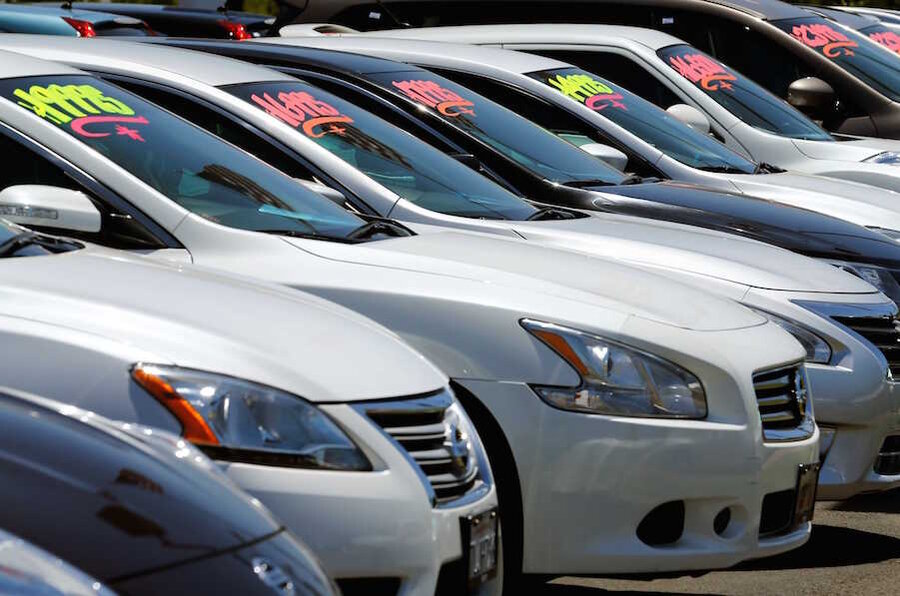Four ways to tell if you're getting a good car deal
Loading...
Maybe you think $4.45 is a bit steep for your morning latte, but the price is not exactly up for debate. Not so in the auto industry, where haggling still reigns. And because a few wrong turns in a car deal can cost you thousands, the stakes are pretty high.
So how can you know you’re getting a good deal on a car, most likely the second-biggest purchase of your life?
First, ask yourself: What kind of shopper am I? Do I just want a fair price, or am I looking to go the extra mile to grind out the best deal possible? Saving money matters, but so do time and effort. Either way, be prepared to do some negotiating.
When you’re ready, the easiest way to keep track of the entire car-buying process is to break it into categories.
“Remember, only one step at a time. Never let a salesman bundle [prices],” says Ray Lopez, author and former car salesman. Here are the four areas to focus on.
Price of the car
Online pricing guides give averages of what people have paid in your area for the car you want. Check Edmunds, Kelley Blue Book and the National Automobile Dealers Association, and pick one with the most favorable numbers.
ZIP code and certain options, such as color, can significantly alter pricing, so be as specific as possible.
And if you want the best price, shop around your area for multiple offers. This doesn’t have to take up your whole weekend; just email dealerships and have them send you prices.
Extra-mile shoppers: Consider shopping different areas with lower average prices. This can be as simple as driving to the next town over, or as involved as buying a plane ticket. It may save $500 if you fly to a cheaper spot and drive the new car home, though it could also take all day and a lot of extra effort.
Trade-in price
The trade-in process can get a little rocky. Customers occasionally get swept up in the excitement of the new car and forget to get themaximum for their trade-in.
Start with the same basics as pricing a car you want to buy:
- Check online pricing guides for your car’s trade-in average.
- Compare quotes from local dealerships. Some dealers may be unwilling to give you a quote until they see the car in person.
With those numbers in mind, negotiate your trade-in like you would a new car. Make sure to ask the dealer to spell out each price in the deal separately. You don’t want to be enticed by a great trade-in payout and miss the higher new-car price.
Extra-mile shoppers: Getting your car detailed can give your car “curb appeal” and bring you a higher trade-in price. Such a cleaning can cost around $150, but you stand to gain even more when trading it in. And if you really want to impress, vehicle reconditioning services can fix all the dings and dents in your old ride. Make sure it’s one that advertises paintless dent removal. Repainting a car lowers its resale value.
Financing
Now focus on your monthly payments, loan length and interest rate. Your dealership can offer you an interest rate, but it’s not your only option.
“If you have prearranged financing, you can go in and say: ‘Can you match this rate or can you beat this rate?’ So you have leverage,” said Matt DeLorenzo, managing editor at Kelley Blue Book.
It’s wise to get preapproved before you hit the dealership, so take a little time to compare auto loan interest rate offers from different lenders.
Also remember new cars depreciate quickly. After your first year, the car is worth 20% less. Don’t wipe out your savings, but shoot for these down payments when financing your car:
- Used cars: 10% down payment + three years of loan payments.
- New cars: at least 20% down + five years of loan payments.
NerdWallet’s auto loan calculator can tell you how much you’ll spend, including the total interest you’ll pay.
Extra fees
If you’ve been waiting all day to drive your new car home, it’s understandable you’d want to move through your contract quickly. But there’s an important last hurdle: extra fees. Here’s a list of commonly acceptable fees:
- Sales tax: Different for each state and can vary by 0.25% by county.
- Documentation fees: Dealerships charge for preparing your documents. Only 10 states cap this fee. If your state doesn’t have a limit, search the average fees in your area, and make sure your dealership isn’t grossly overcharging. If the dealership’s cost is above average, you can leave or ask the staff to lower the price of the car to accommodate.
- Registration: Dealerships charge to register your car through the Department of Motor Vehicles. This varies by the price and type of car.
- Delivery charge (or factory destination charge): Typically required, but beware. Sometimes dealers try to add their own dealership delivery charge — don’t pay that one.
Any other fees, such as “dealer fees,” “vehicle acquisition fees” or “advertising fees,” are common add-ons that you can negotiate. Have your dealer explain every extra charge, and ask the staff to remove any you don’t agree with. If you’re stonewalled, re-evaluate whether the deal is still the best one possible.
DeLorenzo added: “You don’t have to accept everything the dealer places in front of you. Say: ‘Well, I’m not interested in paying that.’ The ultimate power lies with the consumer, because you can always walk.”
Nicole Arata is a staff writer at NerdWallet, a personal finance website. Email: narata@nerdwallet.com.
This article first appeared in NerdWallet.







